You don’t have to break the tape at a big marathon or even your weekly local 5K to want to run faster. Runners of any level are usually interested in improving their performance and making running feel that much better.
Some runners consider supplements like caffeine or a pre-workout drink, others try the latest footwear like carbon-fiber running shoes, and others experiment with training tools like parachutes and anti-gravity treadmills.
Another potential performance-improving strategy is wearing compression socks or compression sleeves while running or after a workout. But do compression sleeves work?
Compression garments have become increasingly popular in the training and recovery protocols for athletes of all sports, including distance runners.
You can now see knee-high compression socks adorning the legs of several of the top finishers in most major marathons, and many of these same athletes don full-length compression tights and tops after the race.
So, do compression sleeves work? This guide will look at the science behind compression sleeves and discuss how they work so you can decide whether this muscle recovery method is right for you.
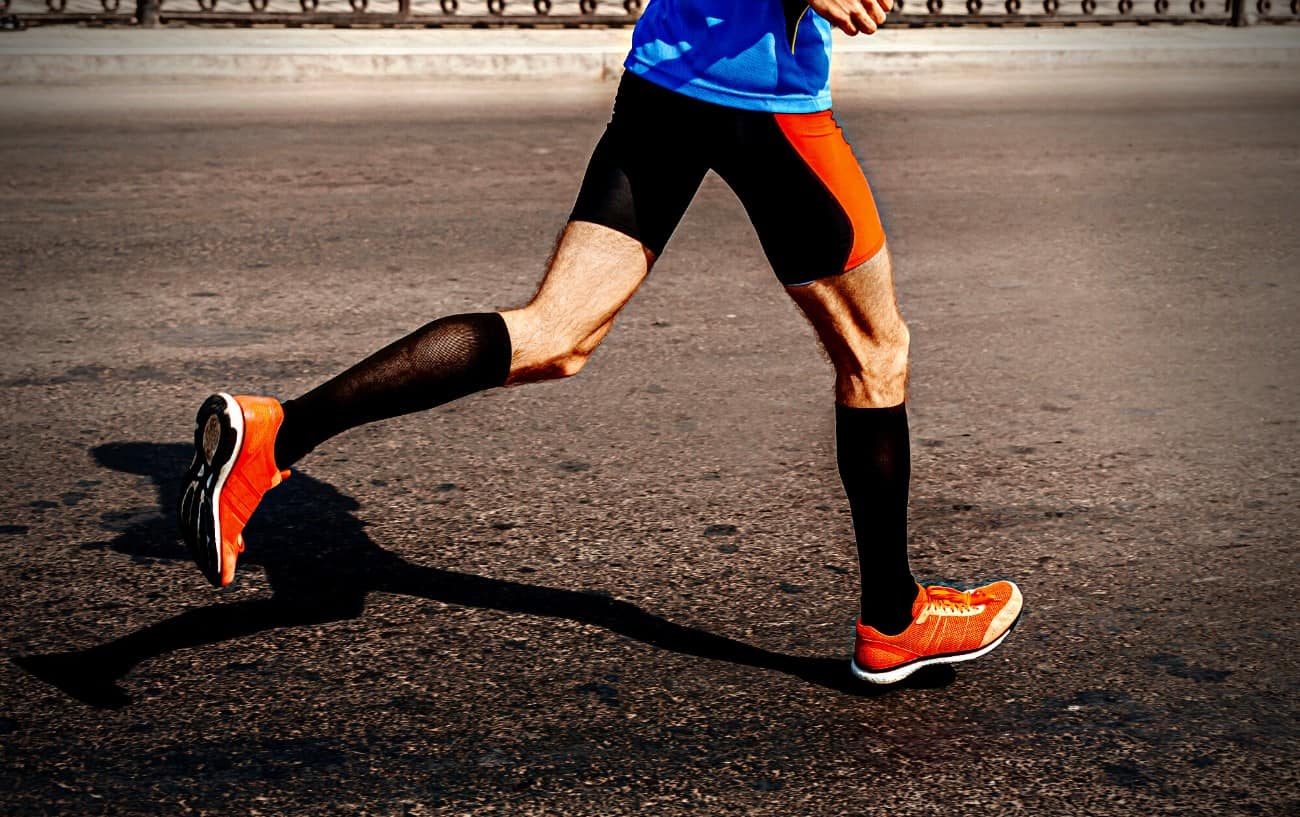
What Are Compression Sleeves & What Do They Do?
Compression sleeves are a type of compression gear worn by runners and other athletes for various potential sports performance and recovery benefits.
There are different types of compression sleeves varying in length, pressure and fabric.
Compression sleeves typically extend from just below the knee to the ankle, providing graduated compression or pressure along the lower leg, ranging from approximately 10-30 mmHg at the ankle and gradually increasing towards the top.
The compression is thought to help increase circulation, prevent swelling, and reduce pain for quicker recovery time.
There are also compression socks, which employ the same concept and look similar to calf compression sleeves but have a foot portion like a regular running sock instead of open at foot.
Compression tights extend the length of the entire leg, and there are also upper body compression arm sleeves and compression tops (long-sleeve shirts).
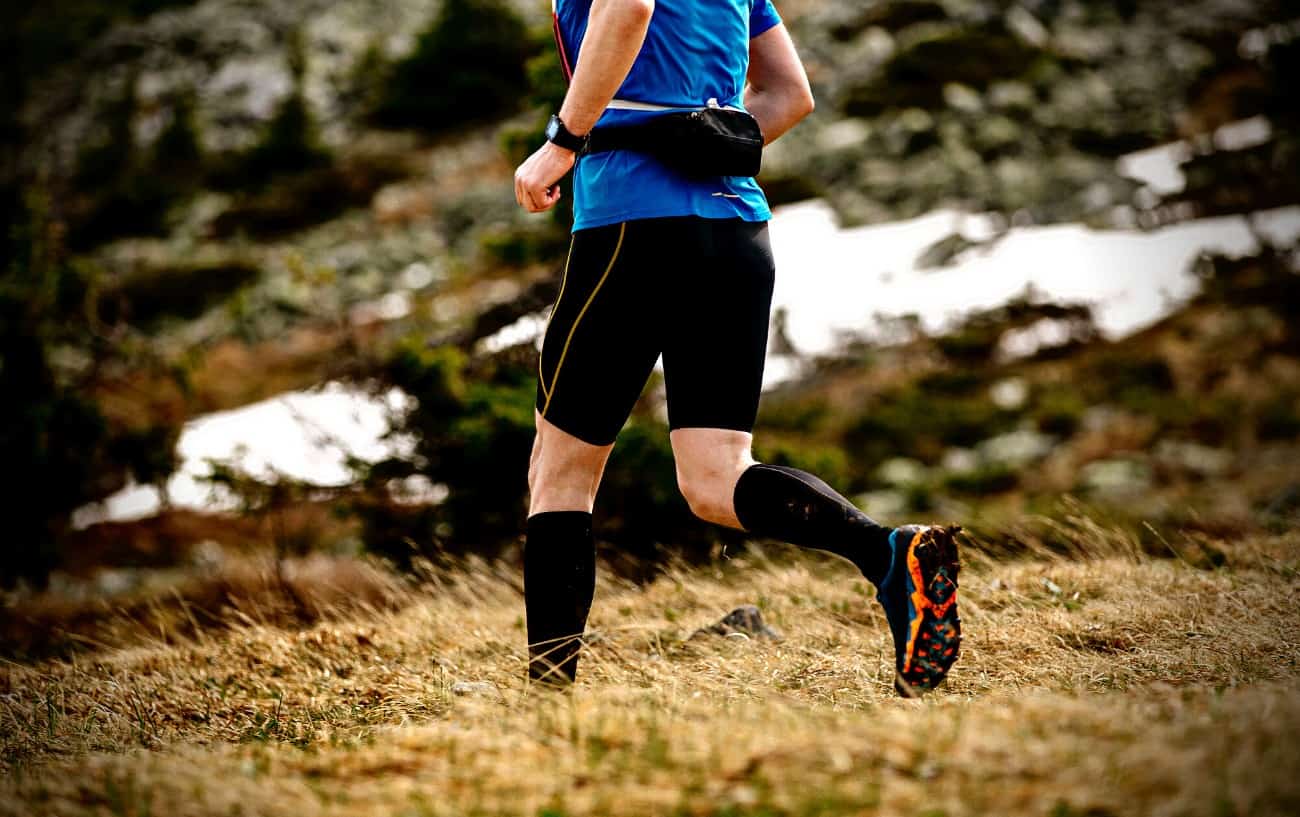
How Effective Are Compression Sleeves For Improving Athletic Performance?
Over the years, there have been quite a few studies on the efficacy of compression sleeves.
One large review1Weakley, J., Broatch, J., O’Riordan, S., Morrison, M., Maniar, N., & Halson, S. L. (2021). Putting the Squeeze on Compression Garments: Current Evidence and Recommendations for Future Research: A Systematic Scoping Review. Sports Medicine. https://doi.org/10.1007/s40279-021-01604-9 which looked at over 150 studies investigating the potential benefits and mechanisms of action for wearing compression sleeves to improve athletic performance reported that results from the individual studies were mixed.
In general, findings suggested that compression sleeves and compression garments seem to reduce muscle oscillatory properties and positively affect the sensorimotor systems.
Moreover, while compression sleeves likely increase arterial blood flow, localized skin temperature, and the perception of muscle soreness and pain after exercise, significant changes in metabolic responses, blood pressure, heart rate, and cardiorespiratory measures seem unlikely.

Research Benefits of Compression Sleeves for Runners
Although not every study has unequivocally demonstrated significant performance improvements from wearing compression sleeves, plenty of studies show the positive benefits of compression sleeves for runners and other athletes.
One small study involving male runners found that wearing compression socks during a 5K time trial resulted in less performance decline (and overall better performance) in a subsequent 5K time trial one hour later compared to runners who did not wear compression socks in the first 5K.
The researchers surmised that this performance improvement was due to improved oxygen delivery, reduced muscle oscillation, and/or superior running mechanics from wearing the compression socks, as well as a potential perceived mental benefit.
Another review2Engel, F. A., Holmberg, H.-C., & Sperlich, B. (2016). Is There Evidence that Runners can Benefit from Wearing Compression Clothing? Sports Medicine (Auckland, N.Z.), 46(12), 1939–1952. https://doi.org/10.1007/s40279-016-0546-5 concluded that wearing compression sleeves increased time to exhaustion, running economy (including biomechanical variables), clearance of blood lactate (lactic acid), perceived exertion, maximal voluntary isometric contraction and peak leg muscle power immediately after running, and decreased markers of muscle damage and inflammation.

There is also evidence to suggest3Born, D.-P., Sperlich, B., & Holmberg, H.-C. (2013). Bringing Light into the Dark: Effects of Compression Clothing on Performance and Recovery. International Journal of Sports Physiology and Performance, 8(1), 4–18. https://doi.org/10.1123/ijspp.8.1.4 that compression sleeves can increase time to exhaustion during exercise and improve performance, effectively warm tissues, and enhance recovery.
Here’s another benefit of compression sleeves for runners: they may reduce the impact forces4Lucas-Cuevas, A., Priego-Quesada, J., Aparicio, I., Giménez, J., Llana-Belloch, S., & Pérez-Soriano, P. (2015). Effect of 3 Weeks Use of Compression Garments on Stride and Impact Shock during a Fatiguing Run. International Journal of Sports Medicine, 36(10), 826–831. https://doi.org/10.1055/s-0035-1548813 of running and the subsequent muscle fatigue, potentially reducing the risk of injury.
While running economy didn’t seem to improve when wearing compression sleeves, one study5BROATCH, J. R., BROPHY-WILLIAMS, N., PHILLIPS, E. J., O’BRYAN, S. J., HALSON, S. L., BARNES, S., & BISHOP, D. J. (2019). Compression Garments Reduce Muscle Movement and Activation during Submaximal Running. Medicine & Science in Sports & Exercise, 52(3), 685–695. https://doi.org/10.1249/mss.0000000000002182 involving treadmill running showed that lower limb compression garments do reduce muscle displacement, soft tissue vibrations, and the muscle activation associated with impact forces while running.
Why does this matter?
We don’t tend to think about soft tissue vibrations as amounting to anything meaningful while running.
However, repeated and/or long periods of exposure to these vibrations can have deleterious effects on soft tissue.
These include pain, loss of function, decreased firing rates of motor units (contractile speeds), reduced muscle contraction force, slower nerve conduction velocity, and blunted sensory perception, which can all negatively impact running performance.
Additionally, excessive soft tissue movement and vibrations have been implicated in developing lower extremity injuries, so minimizing these micro-movements can also potentially help safeguard against running-related injuries.

Benefits of Compression Sleeves for Runners
Based on the research findings and subjective reports from other runners, the potential benefits of wearing compression sleeves while running include the following:
- Increased blood circulation
- Enhanced venous return
- Faster recovery
- Greater lactate tolerance
- Warmer tissue temperature
- Reduced delayed-onset muscle soreness (DOMS)
- Increased sensorimotor feedback
- Improved running economy
- Injury prevention
- Reduced swelling and pain after exercise
How Do Compression Sleeves Work?
It’s still somewhat inconclusive, and various studies have hypothesized different potential mechanisms of action, ranging from increasing tissue temperature and enhancing venous return from compression to the placebo effect.
The warmer the tissue is, the more blood flow increases to the muscles, bringing oxygen and nutrients and helping remove lactate (waste products). This can potentially increase time to exhaustion, reduce feelings of fatigue, and promote recovery.
The compression helps keep the tissue in place upon impact landing at ground contact, reducing muscle vibration and microtears, which may lessen the need for recovery. The enhanced venous return may also minimize swelling and inflammation after a workout.
Lastly, proprioception is increased by the pressure on sensory receptors, potentially improving biomechanics.
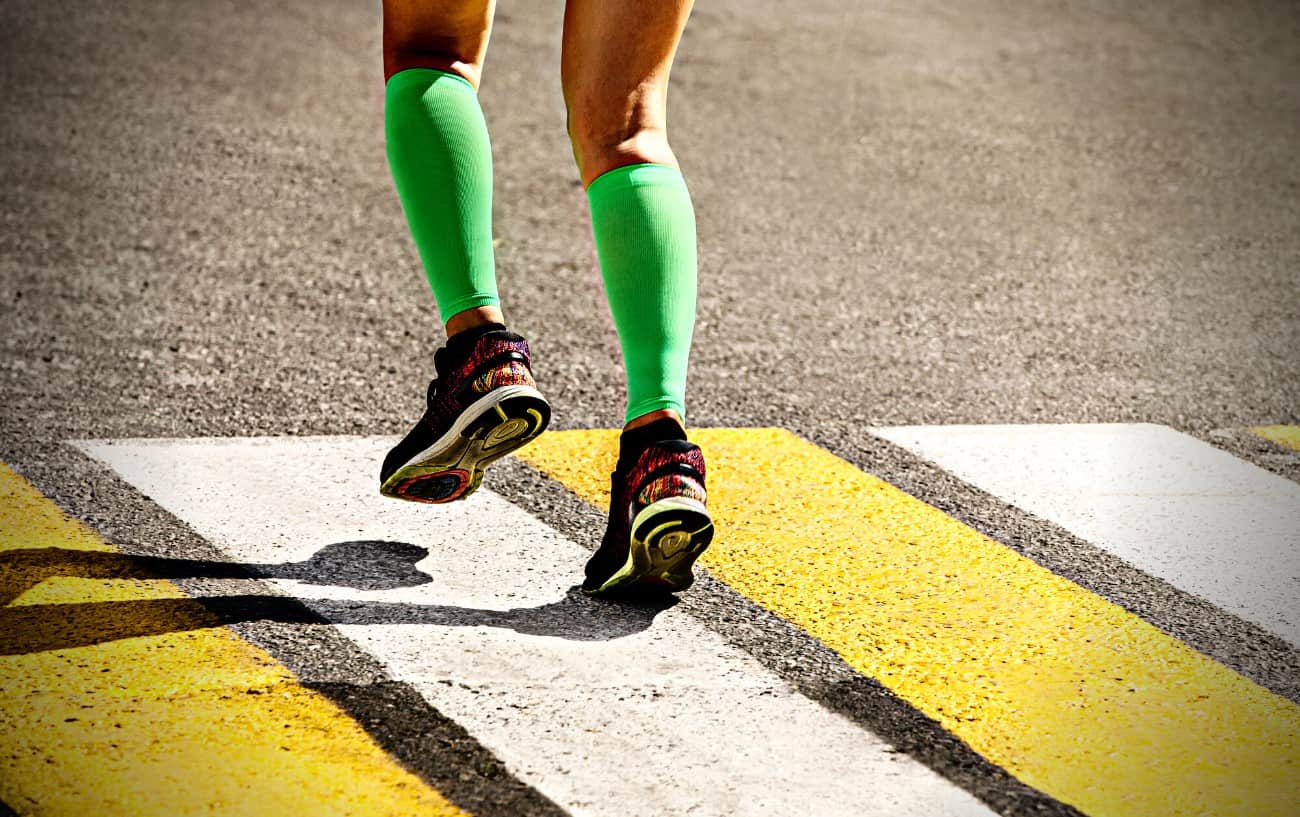
Best Leg Compression Sleeves for Runners
Some evidence6BROATCH, J. R., BROPHY-WILLIAMS, N., PHILLIPS, E. J., O’BRYAN, S. J., HALSON, S. L., BARNES, S., & BISHOP, D. J. (2019). Compression Garments Reduce Muscle Movement and Activation during Submaximal Running. Medicine & Science in Sports & Exercise, 52(3), 685–695. https://doi.org/10.1249/mss.0000000000002182 suggests that compression tights may be most effective at increasing lower-limb blood flow and oxygenation. However, calf sleeves and compression socks are most common among runners.
Want to try some compression therapy? Here are a few products to try:
Swiftwick Aspire 12
These knee-high compression socks provide just the right gentle pressure along the calf to stabilize muscles, aid circulation, and reduce fatigue. The compression socks provide 20-30 mmHg of pressure at the ankle and even pressure throughout the calf.
They also have excellent arch support and are surprisingly thin, which helps prevent your legs and feet from overheating.
They are made from breathable fabric, are blister-proof, and designed to wick moisture to keep your feet cool and dry no matter how far you run.

Feetures Graduated Compression 3 Pack
The Feetures Graduated Compression socks provide 15–20 mmHg of compression at the ankle, gradually lessening toward the top of the sock for an ideally snug, supportive squeeze while facilitating full mobility during a run or any physical activity.
This graduated compression is zone-specific based on the anatomy of the foot, ankle, and calf, which improves the socks’ support and circulation benefits as well as comfort and fit.
Feetures socks have a seamless toe to prevent blisters and are made from moisture-wicking, soft fibers to keep your feet cool and dry despite the knee-high height.
They come in numerous colors, and Feetures backs their socks with a lifetime guarantee, meaning you can replace them at any point should they not meet your needs.
CEP The Run Compression Calf Sleeves 4.0
If you’re looking for a compression sleeve rather than a compression sock, the CEP The Run Compression Calf Sleeves 4.0 are the best choice.
These compression sleeves provide supportive, medical-grade compression, ranging from 22-24 mmHg at the ankle to 16-18 mmHg on the calf.
Smart Dry Extreme Air Technology adapts to weather conditions, keeping you cool in the heat and warm when it’s chilly out. Silver fibers keep bacteria at bay for an odor-free running sleeve.
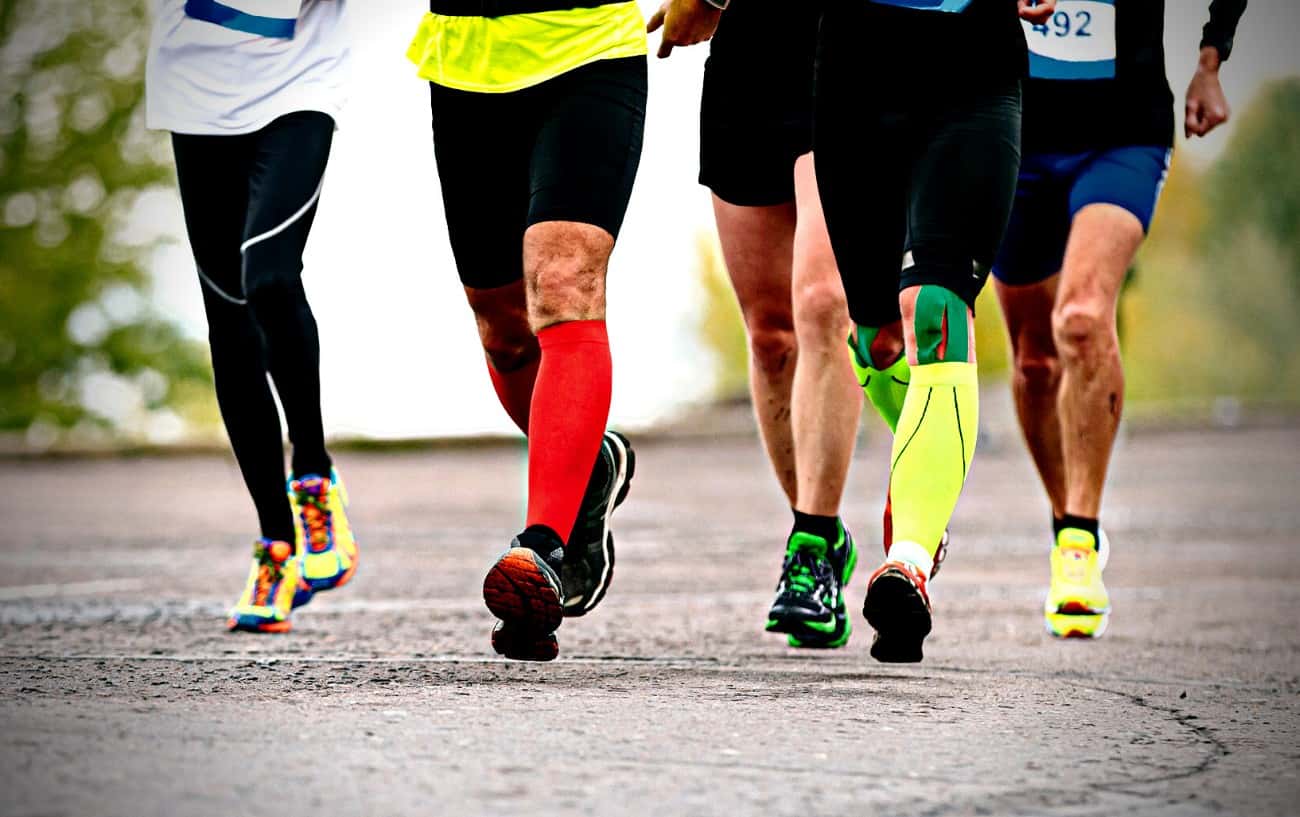
CEP Recovery Pro Compression Tights
If you really want to improve your workout performance and recovery, we recommend the full-length CEP Recovery Pro Compression Tights.
The compression tights hug your legs with a pleasant 20-30 mmHg pressure. Made from high-tech synthetic fibers to reduce moisture and odor, CEP has designed these tights for comfort, durability, and maximal recovery benefits.
We love pulling them on after a long run or track workout to help ease fatigue and facilitate rapid recovery.
What have you seen from your experience regarding compression socks and sleeves? Do compression sleeves work for you? If you haven’t tried them yet, go ahead and do so. They may be a nice addition to your running gear and help improve your performance.
If you are looking for what to wear for the rest of your gear, you can refer to our running gear section to find what’s right for you.
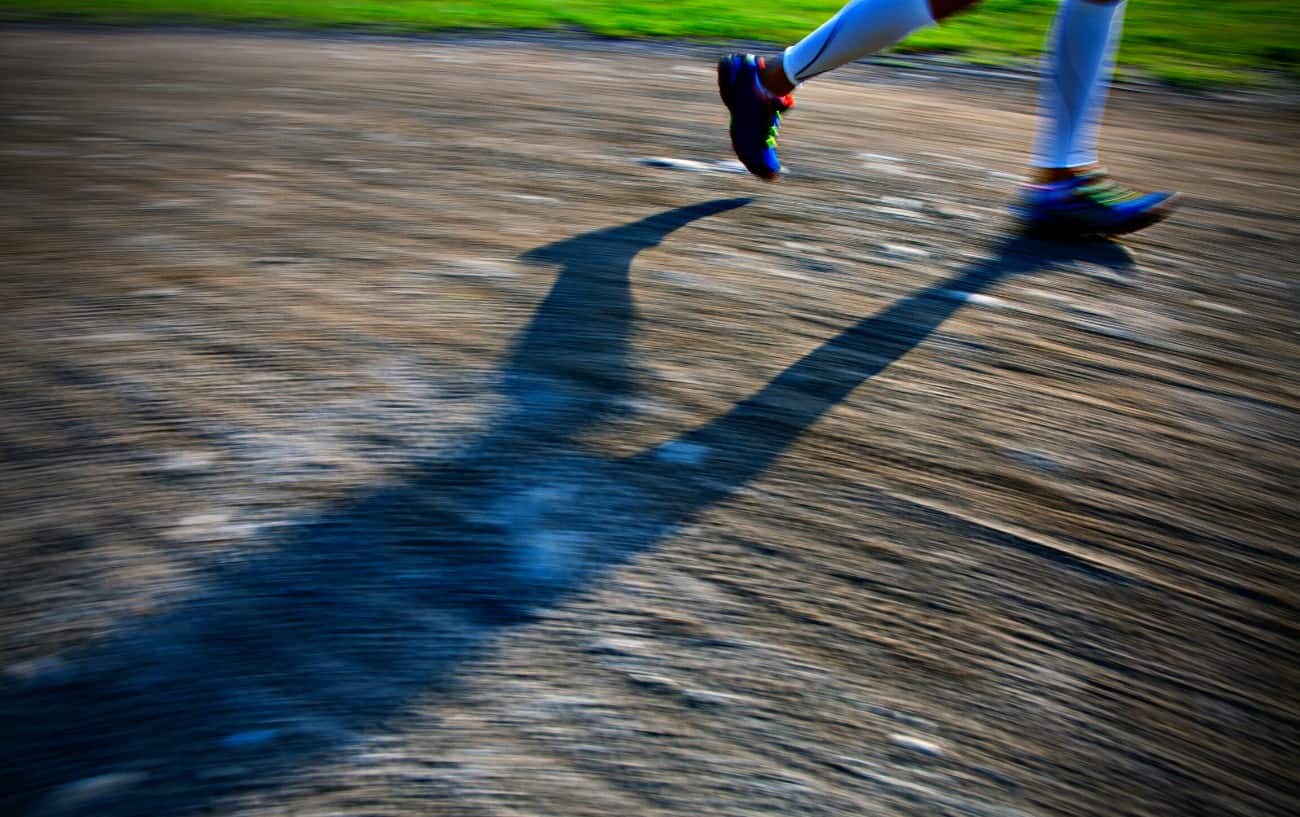













Calf compression sleeves are a must-have for runners! I’ve been enjoying my aZengear calf sleeves for a long time! Can’t imagine my morning runs without them!